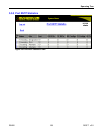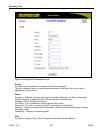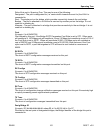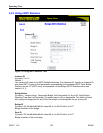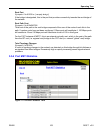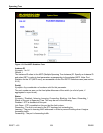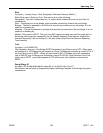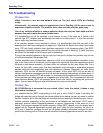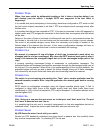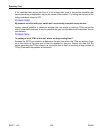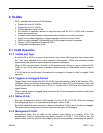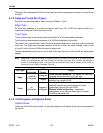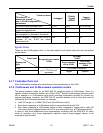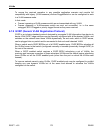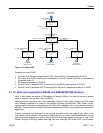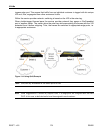
Spanning Tree
RS400 167 ROS™ v3.5
Problem Three
When I test your switch by deliberately breaking a link, it takes a long time before I can
poll devices past the switch. I thought RSTP was supposed to be fast. What is
happening?
Is it possible that ports participating in the topology have been configured to STP mode or that
the port’s point-to-point parameter is set false? STP and multipoint ports converge slowly after
failures occur.
Is it possible that the port has migrated to STP? If the port is connected to the LAN segment by
shared media and STP bridges are connected to that media then convergence after link failure
will be slow.
Delays on the order of tens or hundreds of milliseconds can result in circumstances where the
link broken is the sole link to the root bridge and the secondary root bridge is poorly chosen.
The worst of all possible designs occurs when the secondary root bridge is located at the
farthest edge of the network from the root. In this case a configuration message will have to
propagate out to the edge and then back in order to reestablish the topology.
Problem Four
My network is composed of ring of bridges of which two (connected to each other) are
managed and the rest are unmanaged. Why does the RSTP protocol work quickly when I
break a link between the managed bridges but not in the unmanaged bridge part of the
ring?
A properly operating unmanaged bridge is transparent to configuration messages. The
managed bridges will exchange configuration messages through the unmanaged bridge part of
the ring as if it is non-existent. When a link in the unmanaged part of the ring fails however, the
managed bridges will only be able to detect the failure through timing out of hello messages.
Full connectivity will require three hello times plus two forwarding times to be restored.
Problem Five
The switch is up and running and working fine. Then I start a certain application and the
network becomes unstable. After I stop the application the network goes back to running
normally.
RSTP sends its configuration messages using the highest possible priority level. If CoS is
configured to allow traffic flows at the highest priority level and these traffic flows burst
continuously to 100% of the line bandwidth, STP may be disrupted. It is therefore advised not to
use the highest CoS.
Problem Six
After I bring up a new port the root moves on to that port, and I don’t want it to. The port
that I want to become root won’t do so.
Is it possible that the port cost is incorrectly programmed or that auto-negotiation derives an
undesired value? Inspect the port and path costs with each port active as root.
Problem Seven
My IED/Controller doesn’t work with your switch.
Certain low CPU bandwidth controllers have been found to behave less than perfectly when
they receive unexpected traffic. Try disabling STP for the port.



